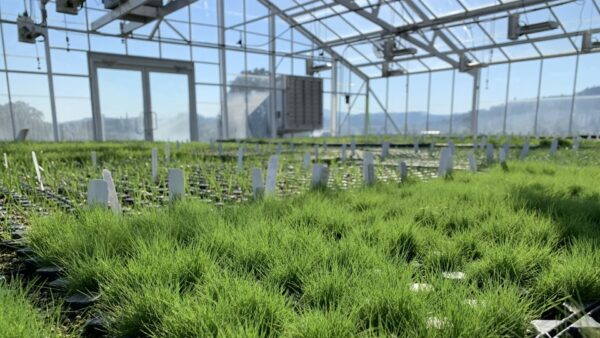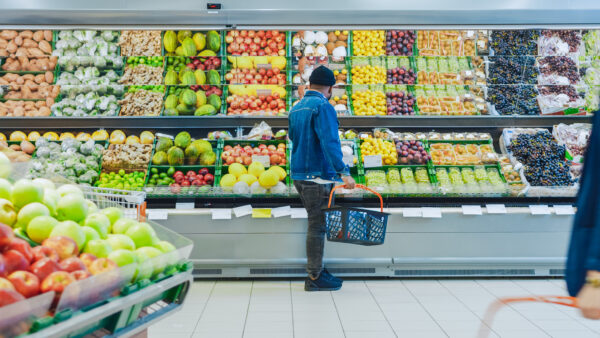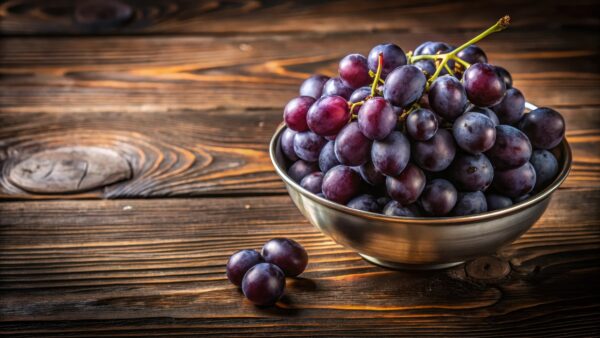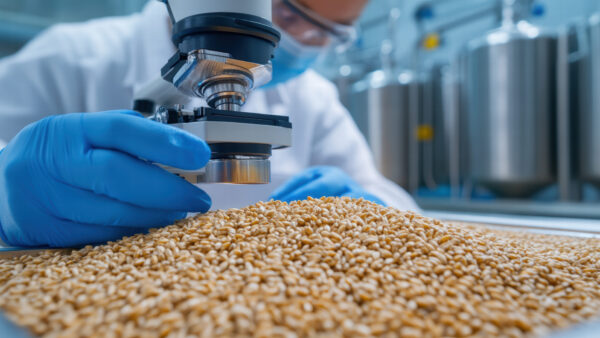Even with the effects of COVID-19, ISF’s committees are working hard to continue their work to maintain ISF’s ultimate goal: a world where the best quality seed is accessible to all.
Every organization has people who work tirelessly behind the scenes. Those committees, while their updates might not be in the news every day, are constantly lobbying, writing proposals and thinking of better ways to improve their industry.
The International Seed Federation (ISF) is no different.
Due to the ramifications of COVID-19 worldwide, the International Seed Federation will hold a virtual congress in 2020. ISF and their committees continue to work behind the scenes to lobby and advocate the best interests of the seed industry.
Seed World chatted with some members of the ISF committees to hear more about what’s happening in some of these realms.
What’s Next After the Failure to Agree on a Better SMTA?
In November 2019, the governing body of the International Treaty on Plant Genetic Resources for Food and Agriculture (ITPGRFA) met to negotiate a new Standard Material Transfer Agreement (SMTA) under the ITPGRFA’s multilateral system of access- and benefit-sharing. Unfortunately, much to the disappointment of the seed sector, the governing body was unable to come to terms on negotiation, resulting in a failure to pass a better SMTA with an expanded crop scope.
Despite this failure, ISF believes the ITPGRFA remains the preferred tool for access- and benefit-sharing of genetic resources for plant breeders, and we need to continue to strive for a new SMTA and other enhancements of the Treaty.
“This contract is agreed upon by all the countries that are members of the international treaty,” says Hélène Khan Niazi, ISF international agricultural manager.

According to Khan Niazi, there are around 146 participating countries in the governing body, and they all have to reach a 100% consensus to approve changes to the SMTA. And, of course, everyone on the governing body is looking for something different to benefit from the Multilateral System.
“If there’s one country, even a small one, saying no, then everything is stuck,” Khan Niazi says. “Some are looking for more finance to come into the Benefit-sharing Fund, while others were more concerned about discussing digital sequencing information, and how that fits into the puzzle.”
Anke van den Hurk, deputy director of Plantum, says that there were three items that really affected the outcome of the SMTA:
1. The payment rates
2. Digital Sequence Information (DSI)
3. The list of crops for which the SMTA can be used
“First, the question was if there’s a payment rate, how high is the rate?” van den Hurk says. “The second was on DSI — there was no agreement on that. Finally, the SMTA only applies to 64 crops, and some countries only wanted a new system if it was extended to all crops.”
Khan Niazi says the payment rate has been a point of contention and is rather difficult to discuss.
“For the first six to seven years of the functioning of the treaty, there was no money,” she says. “Breeding is an activity that takes time, and the sharing is only available when the variety is available on the market.”
Of course, it takes anywhere from seven to 10 years to breed a new variety and get it on the market.
“It’s only now that seed companies start sending money to the benefit sharing fund of the ITPGRFA, from the varieties accessed 10 years ago with a SMTA,” she says. “Maybe money will flow in, but we can’t promise anything.”
“The point is that the expectations of the amount of money coming into the Benefit-sharing Fund are all different,” van den Hurk says. “It’s hard to pinpoint who’s right and who’s wrong. However, companies will only participate in the system if it makes business sense, and they can’t do that if the rate is too high.”
However, one of the other bigger contention points surrounded the idea of DSI.
“This has been boiling up now for the past three years,” says Paul Olson, Plant Variety Protection and Germplasm lead for KWS. “DSI is now something some countries are very vocal about and want to see in the scope of the SMTA.”
According to the Food and Agriculture Organization (FAO), DSI plays a fundamental role in environmental and biological research because it contributes to the understanding of the molecular basis of life and evolution. However, the FAO also states that currently, there is no agreed upon definition for DSI due to differences in terminology in scientific circles, which reflects differences in the material referred to.
“There’s no definition around DSI, and no one knows how to define it,” Khan Niazi says. “All eyes are on the Convention of Biological Diversity (CBD) and the Nagoya Protocol— the topic has come up in both organizations, and if the CBD decides on a definition for DSI, the international treaty will probably have to go with it.”
“We’re lobbying to keep DSI out of the scope of these regulations,” van den Hurk says. “We’re convinced that if it’s out of the scope, it is better for everyone.”
The final problem was the limit on the crops that the SMTA extends to.
“There are some major crops, such as soy and many vegetables that aren’t included in the list,” says van den Hurk. “It is the position of ISF to extend the list to all crops for breeding and at least plant genetic resources for food and agriculture”.
“Vegetable breeders use a bit more genetic resources from seed banks, so it becomes a problem if the SMTA isn’t expanded to vegetables,” she says. “However, some gene banks use the SMTA and extend it to all crops within their germplasm — in fact, the first benefit-sharing money that came into the fund came from a non-listed crop.”
However, even with some of these issues, ISF is still positive that one day, the governing body will be able to find a solution to make a harmonized SMTA.
“The Working Group that was negotiating the new terms of the SMTA is not going to meet in 2020 or 2021 — it’s up to the countries and up to the region to keep the discussion alive,” Khan Niazi says. “ISF is here to keep the dialogue alive with whoever wants to start talking about it. While the dialogue isn’t dead, it has slowed down. But we are here to keep discussing.”
“We need to be ready to continue to talk with governments,” Olson says. “On an informal basis, governments will probably start talking to each other more to help each other understand the issues. Industry needs to be prepared to share our reactions and experiences during this waiting period.”
Striving for a Systems Approach
Another task that ISF has been working towards for a few years is the promotion for the adoption of a Systems Approach when it comes to the international movement of seed. The ISF goal is to facilitate the international movement of seed by supporting the development of Systems Approach as an alternative option to the current phytosanitary certification system.
“Systems Approach is one of the activities that the ISF Phytosanitary Committee is actively working towards,” says Michael Leader, seed regulatory lead of Asia and Africa for Bayer Crop Science. “Currently, we still have consignment-by-consignment certification.”
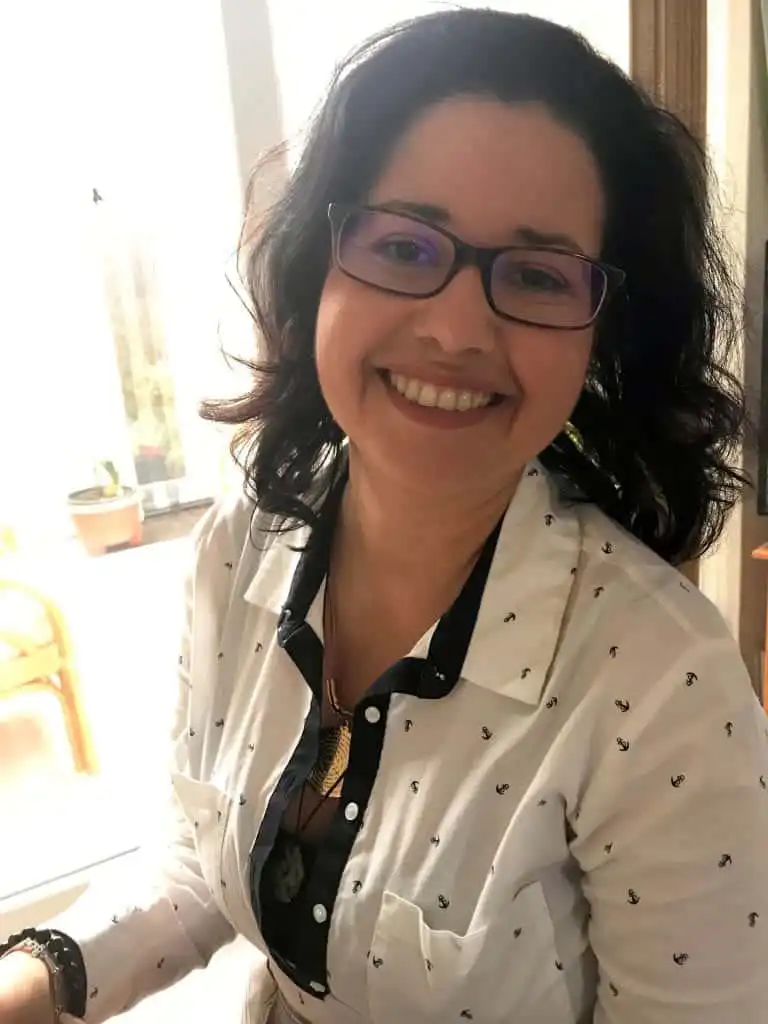
“Systems Approach is not a new concept, although it has not been used for the movement of seeds. For the seed companies a multilateral Systems Approach would be most suitable, compared to the already implemented Systems Approaches (fruits and vegetables for export) based on ISPM14, which are via bilateral agreements between countries.” says Rose Souza Richards, Seed Health manager of ISF.
Souza Richards explains that under a Systems Approach certification the import and export of seed will happen in a certified supply chain, based on current industry pest management practices. The International Standard for Phytosanitary Measures Number 38 (ISPM 38) already recognizes that many pest management practices throughout the seed production process (e.g. pre-harvest, harvest, post-harvest) can be included under a Systems Approach. All in all, Systems Approach would be a more sustainable solution instead of today’s consignment-by-consignment certification system.
However, Leader also mentions that the Systems Approach wouldn’t replace the current system — it would merely be offered as an alternative to the current consignment-by-consignment inspections.
“Systems Approach has been implemented in a number of things already,” Leader says. “For example, it’s already used in fresh apples. In terms of the seed industry, this concept is new, and it will be less trade restricted. We’re already addressing plant health risks during our processes and treatments during production. If current industry best practices can be considered by the National Plant Protection Organizations (NPPOs) when they are assessing the risks, that will help the international movement of seeds.”
Leader says that one of the reasons the adoption of Systems Approach would help the seed industry is the reduction on the number of extra seed health tests that are currently required for the industry to complete when exporting to different countries. These extra tests are expensive and add more time causing delays during sowing season.
“Often, we don’t know where the final country will be for the seed lots at all times — due to drought or other conditions, seeds can end up going to different countries other than what initially was intended,” he says. “Having governments recognize our processes and treatments during the production system means we can get seed where and when it’s needed.
“In some countries, we just can’t get the seed to the growers,” he says. “When you look at the food security window, you don’t get the full benefits of that germplasm. When we need to feed the world in a sustainable manner, there’s seed that could be used that isn’t getting used. A Systems Approach would be a win-win solution for governments as well as industry.”
“The idea is that under a Systems Approach certification the movement of seed will happen in a more predictable way,” Souza Richards says. “In return, the process will become more efficient.”
Souza Richards explains that seeds produced under a certified supply chain by “approved” producers, can be moved between countries that recognize the Systems Approach certification with a “generic” Phytosanitary Certificate, which does not specify individual pests, but which guarantee the total check of the phytosanitary safe state regarding pests which concerned seeds could be a pathway.
“On average, the large majority of regulated pests for the seed haven’t be proven that seed is a pathway of introduction of the pest under natural conditions in the field,” Leader says.
“A Systems Approach may include general requirements such as risk evaluation, pest monitoring and reporting, pest risk management and a documented quality management system with checks and inspections at specific points during the growing season,” Souza Richards says. “The documented quality management system (QMS) will be audited and approved/recognized by the exporting country. Further, the International Plant Protection Convention (IPPC) is embarking on the drafting of an Annex to ISPM38 (‘Design and use of Systems Approaches for phytosanitary certification of seeds’), which may lead to a harmonized framework for Systems Approach and guidance to NPPOs on approval of industry production practices and an audit process that can be implemented globally. The Annex provides an opportunity to harmonize seed regulations which would facilitate global seed trade.”
Leader says one of the most important things now to support a Systems Approach is to talk to governments and educate them on how seed is produced.
“Governments are used to apples getting produced in one country and then being sent to another, but they don’t understand how seed gets to a grower,” he says. “We’re trying to show them how that happens. We explain the breeding process, the testing process, how we choose our growers to do our production, how we clean the seed, how we try to remove diseased or bad quality seed and finally, where seed may go. We try to show them the problems associated with where we’ve found problems of how pests are regulated around the world, but we need to give them more.”
But, when it comes to a timeline of when the Systems Approach could be implemented, both Souza Richards and Leader are on the less-than-optimistic side.
“I’ve been working on this Systems Approach piece for the last two or three years,” Leader says. “But the next step of the process means for the industry and governments more transparency with one other. However, we should be proud, since we’re already starting to have that transparency. I’d love to see some governments involved within the next year or two.”
“We’re following the process of the development of the Systems Approach Annex by the IPPC,” Souza Richards says. “There’s still work to be done by us and also by the IPPC prior to Systems Approach for seeds to be recognized internationally. Based on the timeline that the IPPC process take, it is fair to assume that the earliest possible year of approval would be 2024. Then we’d start the process of implementation. Of course, that can take longer based on how many national plant protection organizations are willing to approve Systems Approach as their chosen phytosanitary certification option for the import/export of seeds.
“Ideally, Systems Approach for seeds can be built up gradually and evolve from only a few participating countries in the beginning to global acceptance in time,” she says.
Essentially Derived Varieties Proving to Be a Challenge

In late October 2019, a committee of the International Convention for the Protection of New Varieties of Plants (UPOV) agreed to revisit their explanatory note on essentially derived varieties (EDVs).
“The idea of EDVs was conceived in 1991,” says Magali Pla, industrial property manager of Limagrain. “It was meant to broaden the scope of protection for breeders of an initial variety by creating a form of dependency between the initial variety and their EDVs so that the EDVs are dependent on its initial variety.”
“UPOV members adopted this concept of EDVs to ensure that the initial breeder could get some returns on the investment he made on the initial variety, the EDV being predominantly derived from this initial variety,” Pla says. “However, the question became: Are these concepts clear enough?”
Since the original adoption of the EDV concept, interpretation of it has caused some heated debates, especially over the adoption of the latest UPOV Explanatory Notes on EDVs in 2017.
“That Explanatory Note from UPOV raised some questions,” says Judith de Roos, legal counsel for Plantum. “This note was adopted through consensus of all UPOV members which resulted in unclear language, and now, there’s been some debates about its interpretation and the meaning of the text.”
De Roos mentions that some read it in what is called “the Australian approach,” which is where there can only be an EDV if all essential characteristics are maintained in the derived variety. A predominantly derived variety would not be considered an EDV from the initial variety if that variety differs in one or more essential characteristics even if it has retained all other characteristics from the initial variety.
“Normally when it comes to EDVs, the Plant Breeder’s Rights (PBR) owner of the initial variety can allow the EDV to be used or not,” she says. “However, Australia says it shouldn’t be possible for the owner of the initial variety to block a derived variety which possesses an important trait for the market. This now especially comes up in context of the rise of gene editing technology as this enhances the possibility to introduce new traits in existing germplasm. The breeders argue that this new trait could have been introduced in any variety, but a deliberate choice is made to use a protected variety of another breeder.
“The base line of this modification of the Explanatory Notes would be to provide clarity and ensure no confusion on how to interpret this note, as we have reasons to believe that there is and will be misinterpretation.”
Pla agrees: “The misinterpretation comes into play if you have a new variety that was created using an initial variety but has a new important agronomic trait. Depending on interpretations of the above-mentioned concepts, this new variety could not be considered as an EDV. Therefore, the breeder of the initial variety cannot retrieve any new returns from the use of this new variety, which is not acceptable.”
“Another question was brought up questioning whether the EDV concept is working well, because there are not so many litigations,” de Roos says. “Is it clear, or is it so unclear that people won’t start to litigate?”
“In the last meeting of UPOV members, ISF explained the fact that there is little litigation is not showing the failure but in contrary the success of the EDV-principle,” De Roos says. “However, UPOV will only start working on the amendment of this note if they have more background regarding the practices and problems of breeders.”
This is where ISF has stepped in.
“ISF and a few different organizations like Croplife, CIOPORA and Euroseeds made a survey and sent it out to companies to get more background information from companies on the subject of EDVs,” De Roos says. “We have received many reactions from breeders in different crops and from different geographical regions. Based on the answers a submission has been made to UPOV recently. This shows a rather united view among the breeders’ community. Most of them are satisfied with the EDV-provision and many breeders act accordingly in their own breeding practices. Nonetheless, more clarification is asked for especially regarding this so-called Australian approach.”
At their last meeting in October 2019, UPOV members adopted a resolution to open the Explanatory Note. Following the submission on breeders’ practices, UPOV should adopt Terms of Reference in October 2020 to act the creation of a new working group drafting the new Explanatory Note. The seed sector hopes to get a seat as observer to actively participate in clarifying these complex but needed concept.
Educating on Plant Breeding Innovation
One of the other major aspects of ISF’s work surrounds plant breeding innovation (PBI), and more specifically, getting the word out about why PBI is so important, and why it’s necessary to make agriculture more sustainable for the future.
Especially in a time where so many countries are developing new regulations, Bernice Slutsky, senior vice president of innovation for the American Seed Trade Association and chair of the ISF Working Group on Plant Breeding Innovation, believes it’s important to have as much knowledge as possible around the idea of PBI.
“We’re seeing countries and regions move forward and develop their policies,” she says. “These are focused on determining the criteria on what they will use to determine whether particular products will fall inside or outside particular biotech/GMO regulations.”
According to Slutsky, currently countries in South America have been the leader in developing their policies and working on harmonizing them.

“Countries in South America use the criteria of novel genetic combination to determine which products fall under their GMO regulations,” Slutsky says as an example of how they work to decide what will be treated as a GMO or what will not. “If you use gene editing to make a targeted deletion, for example, that application would not meet the criteria of making a novel genetic combination, and therefore, that product would fall outside the GMO regulations.”
Therefore, South America makes determinations on a case-by-case basis.
“One of the trends we’ve seen is if you’re working within the parameters that plant breeders have always worked in, those products wouldn’t be subject to a premarket approval process that biotech or GMOs would have to go through,” she says. “There’s also some big unknowns. The EU Court of Justice decision was a big step backwards, and we still don’t know where China is going to fall either.”
Because of that, communication is more important than ever.
“We’ve had an ongoing communication with the International Grain Trade Coalition (IGTC), and we’ve developed a guidance document with respect to stakeholder engagement,” Slutsky says. “We’re trying to provide tools for ISF members to use when talking about PBI. We have plans to make that guidance document based on what we see around the world.
“For ISF, we want to provide as many tools and guidance to our members as we can,” she says. “It won’t be a one-size-fits-all, because there are different drivers in each country, but there are some commonalities in each.”
Slutsky says it’s important to find out what the needs are for their stakeholders, and then put it in the context of plant breeding.
“We’re going to put more detail around this, but it’s important for stakeholders to put everything in the context of plant breeding programs, and how plant breeding works,” she says.
As for her advice for seed companies when communicating PBI, she says it’s important to lead with the benefits.
“It’s important to share our story, because we have a great story to share,” Slutsky says. “Plant breeding has a great history of safety, and genome editing is just one tool in our toolbox that enables us to provide benefits not only to our value chain stakeholders, but also to consumers
“Plant breeders are problem solvers,” Slutsky says. “They’re using all their tools, including gene editing, to solve problems.”
Reviving the Global Communications Network
ISF isn’t just working on revving up their communications in PBI, though. They’re also working on ramping up their communications as a whole, by reviving the Global Communications Network.
“When I joined ISF a year ago, it was clear to me that communications would play a huge supporting role to achieve ISF’s key strategic objectives,” says Francine Sayoc, communications manager of ISF. “I saw potential in bringing together the best minds in communications from the seed sector and harnessing efforts to create a better impact.”
In a nutshell, that’s what the Global Communications Network is all about.
“It’s a group that existed before I joined the association,” Sayoc says. “I wanted it to become more focused and have more active representation from different parts of the world. The main contribution of this group would be to align and coordinate messaging so that we all speak with one voice.”
Sayoc says that this group is to support ISF members, but also to support ISF members who don’t have many resources to put to communication.
“We want to provide them tools that will enable them to take a more proactive approach in communicating,” she says.

Some of these tools are also meant to foster a better way for the seed industry to work together, according to Sayoc.
“We all realize that our objectives in communications are common and our overarching goals are aligned,” she says. “Being part of the group makes us feel less isolated in our work. One of the primary objectives of the group is to exchange resources with each other. By sharing and repurposing existing tools like videos, infographics and social media content, we get the double benefit of being consistent in our messaging and also saving time, effort and money.”
Currently, the Global Communication Network is primarily for member use.
“Later, we hope to include partner organizations in the mix, knowing full well that the seed sector is just one part of the food system,” Sayoc says. “If we really want to connect the dots, we should work with other organizations and stakeholders in the value chain.”
But as for right now, ISF is focusing on a more consistent engagement in the Global Communications Network.
“Aside from the regular teleconferences, we aim to meet at least once a year during the ISF Meetings,” she says. “I believe there is nothing better than seeing each other and having discussions in person to increase understanding and collaboration.”
“During our first face-to-face meeting in Porto last February, we had seven representatives from national and regional seed associations, and seven from seed companies,” Sayoc says. “It was a good first meeting, with a lot of meaningful input from the members and also important questions posed. However, there’s a lot of work to be done. This is just the beginning.”









